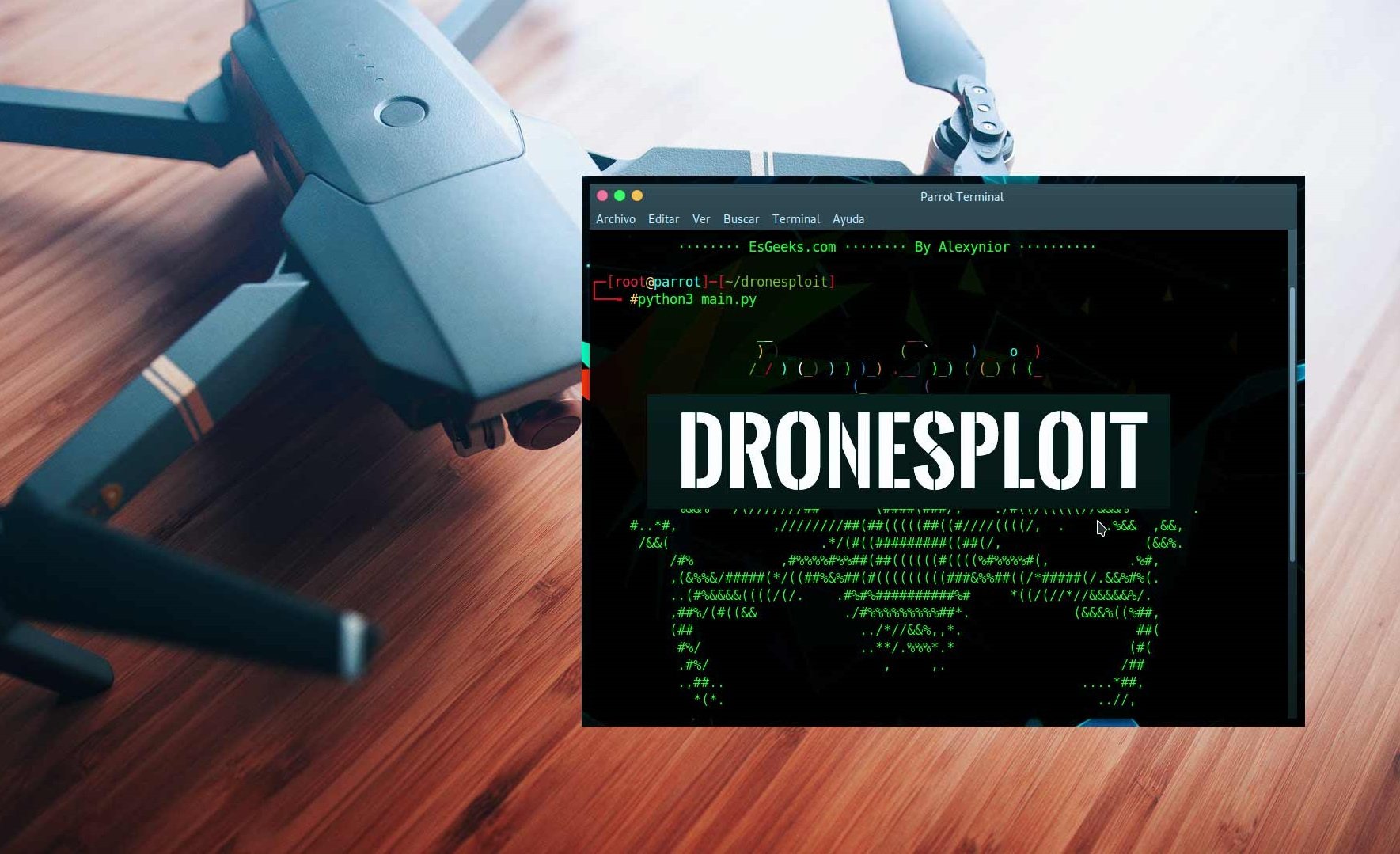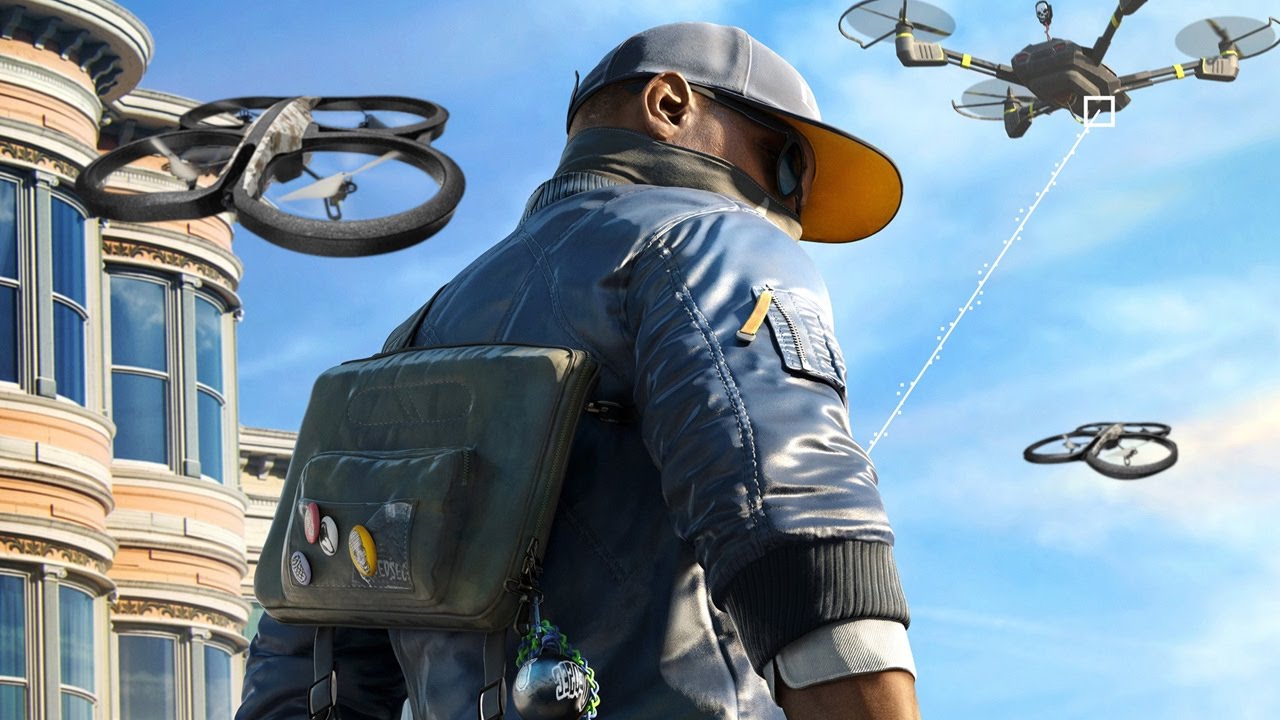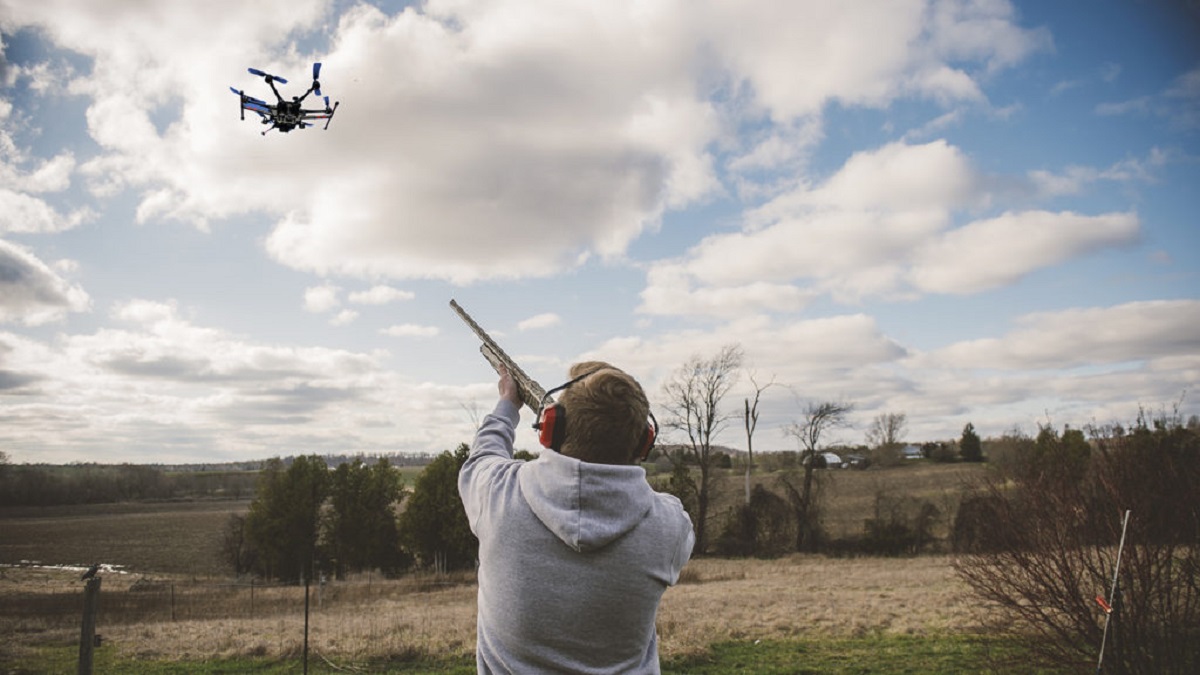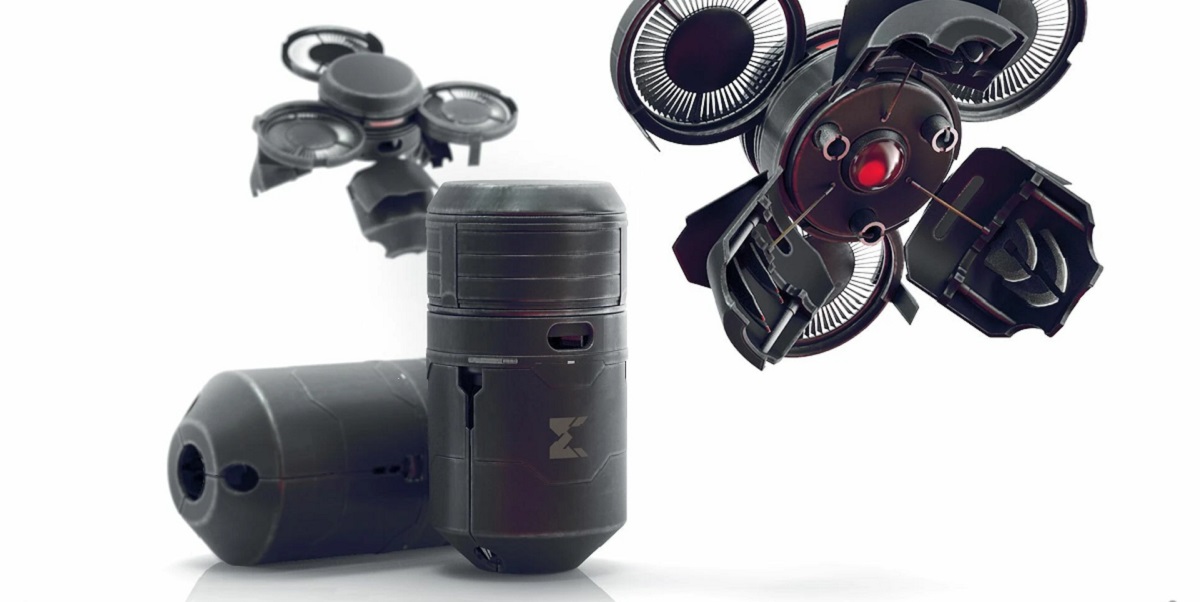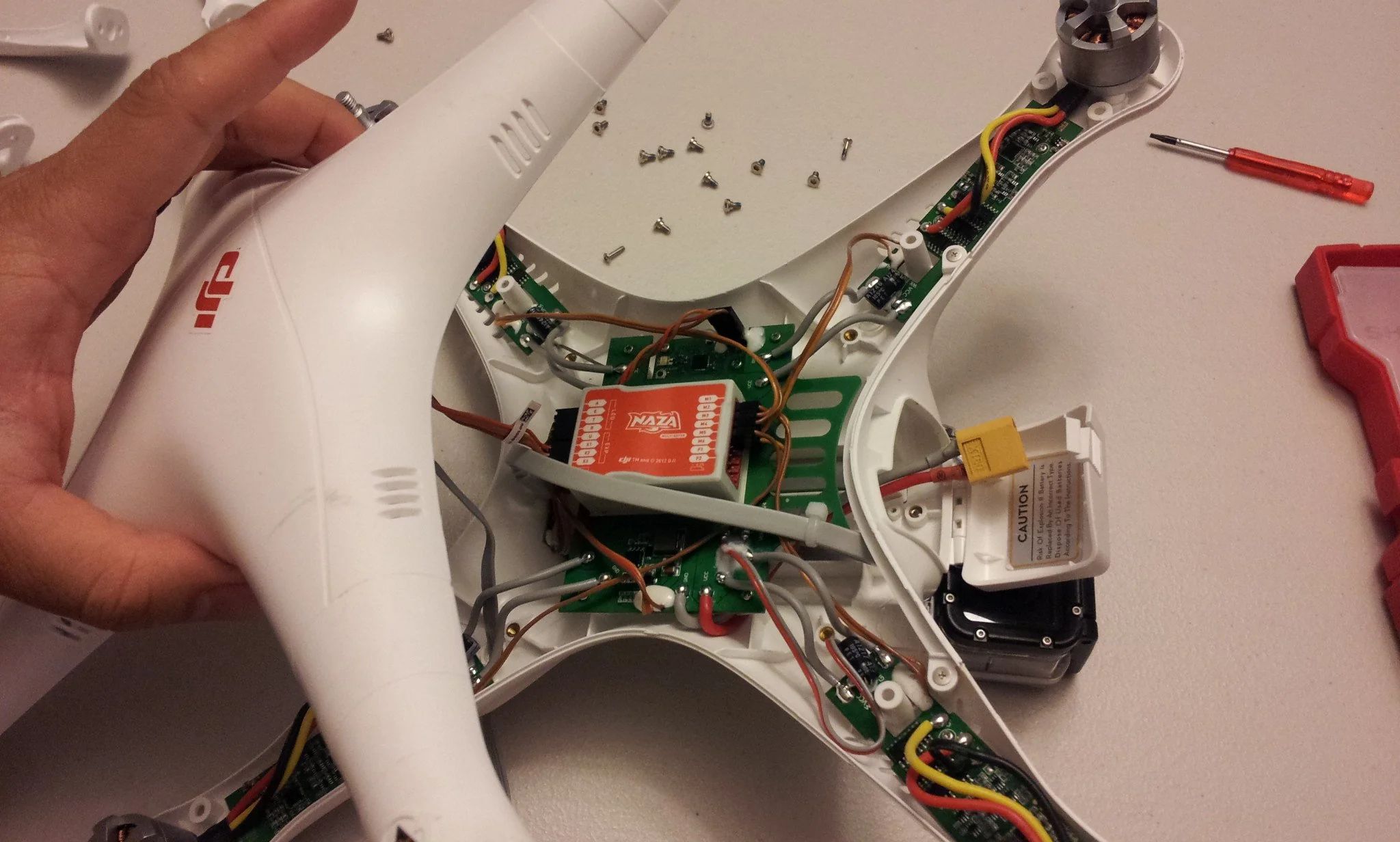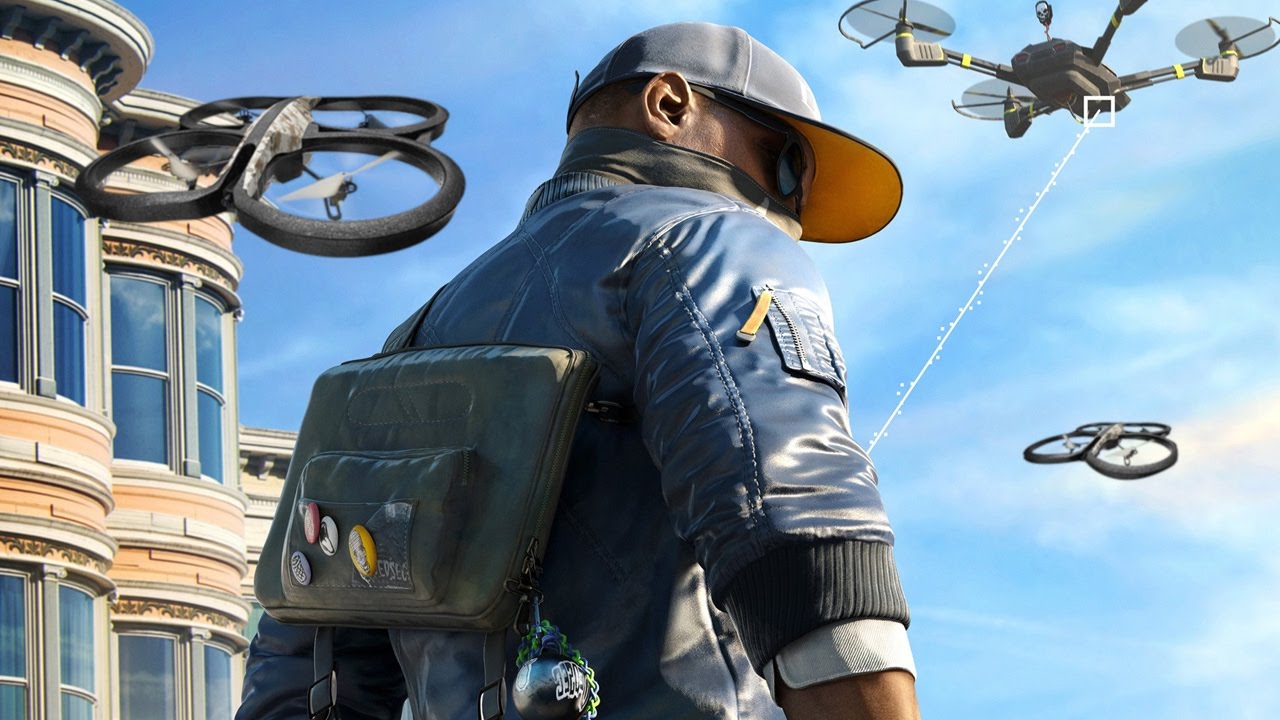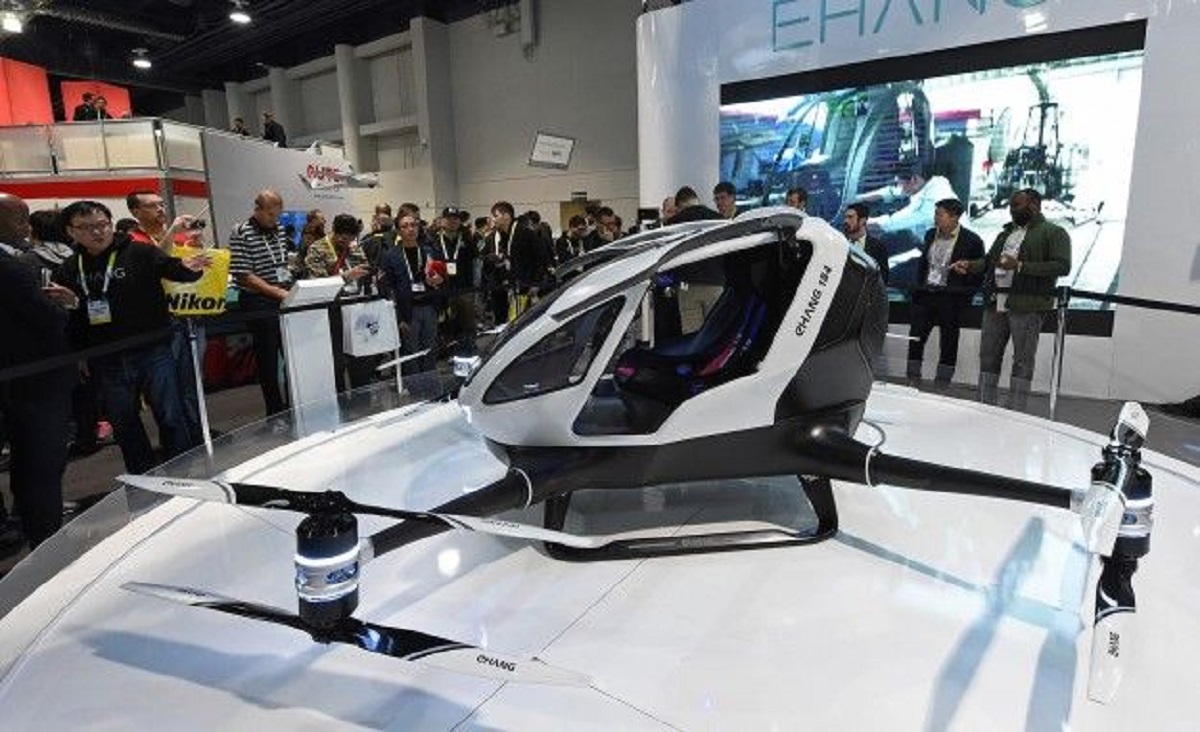Introduction
Welcome to the thrilling world of drone technology! Drones, also known as unmanned aerial vehicles (UAVs), have become increasingly popular in recent years. These versatile devices have revolutionized industries such as photography, videography, delivery services, and even agriculture. However, as with any technology, there may come a time when you want to explore beyond the limitations of your drone’s stock features. This is where drone hacking comes into play.
Drone hacking, also referred to as drone modding or drone tinkering, involves modifying a drone’s software or hardware to enhance its capabilities or unlock additional features. It allows enthusiasts to push the boundaries of what their drones can do and customize them to suit their specific needs. While drone hacking may sound like an activity reserved for technical experts, you’ll be pleasantly surprised to learn that even beginners can get started with some basic hacks.
In this article, we will provide you with an overview of drone hacking and introduce you to the various aspects you should consider. We will explore both software and hardware hacks, as well as delve into the potential legal and ethical implications that come with modifying a drone. Whether you’re a hobbyist looking to elevate your drone’s performance or a tech enthusiast seeking to dig deeper into the inner workings of these amazing machines, this article is your guide to the exciting world of drone hacking.
Before we embark on this adventure, it’s important to note that drone hacking should always be done responsibly and in compliance with local laws and regulations. It’s vital to respect the privacy and safety of others while enjoying the capabilities offered by drone technology. With that said, let’s dive into the fascinating realm of drone hacking and discover the endless possibilities that await!
Understanding Drones
Drones, also known as unmanned aerial vehicles (UAVs), are remotely controlled aircraft that have gained immense popularity in recent years. These flying machines come in various sizes, from small consumer drones to larger commercial and military-grade models. Drones are equipped with multiple propellers that provide lift and propulsion, allowing them to hover, fly, and maneuver in the air.
One of the key advantages of drones is their ability to access areas that are difficult or dangerous for humans to reach. They have transformed industries such as aerial photography and videography, search and rescue operations, infrastructure inspection, and agricultural monitoring. Drones offer a unique perspective by capturing stunning aerial shots and providing valuable data from above.
Most consumer drones are equipped with a range of sensors, including GPS, accelerometers, gyroscopes, and cameras. These sensors provide the drone with the necessary information to stabilize and navigate its flight path. Additionally, drones are controlled remotely through a transmitter or a smartphone app, allowing users to steer, land, and take off with ease.
Understanding the different components of a drone is essential for anyone who wishes to explore the possibilities of drone hacking. By gaining a basic understanding of how drones work and the components they are built with, you’ll be better equipped to modify and enhance their capabilities.
When it comes to hacking drones, it’s crucial to note that not all drones are created equal. Some drones are designed with open-source software, allowing for greater customization and modifications, while others have closed-source systems that limit the extent of tinkering. Familiarizing yourself with the type of drone you own and its limitations will help you determine which hacks are feasible and safe to perform.
In the next sections, we will explore the different aspects of drone hacking, including software hacks, hardware hacks, and the communication systems used to interact with drones. So, let’s delve deeper into the exciting world of drone technology and uncover the possibilities that await!
Understanding Drone Systems
Drones are complex machines that consist of various interconnected systems that work together to enable flight and control. Understanding these systems is crucial for successful drone hacking, as it allows you to identify the areas that can be modified or enhanced. Let’s explore the key systems that make up a drone.
1. Power System: The power system of a drone includes the battery, motor, and propellers. The battery provides the energy needed to power the motor, which in turn drives the propellers to generate thrust and lift the drone off the ground. Upgrading the power system can result in increased flight time, improved stability, and even higher payload capacity.
2. Flight Controller: The flight controller is the brain of the drone and is responsible for processing data from various sensors and controlling the motors to stabilize and navigate the drone. It uses algorithms to interpret sensor data and make adjustments to maintain stability and execute flight maneuvers. Modifying the flight controller or using alternative firmware can unlock advanced flight modes and improve performance.
3. Navigation System: Drones rely on a navigation system to determine their position, altitude, and orientation. GPS (Global Positioning System) is commonly used for outdoor navigation, while indoor drones may rely on other sensors such as altimeters and optical flow sensors. Enhancing the navigation system can lead to more accurate positioning, autonomous flight capabilities, and advanced waypoint navigation.
4. Camera System: Many drones come equipped with cameras or have the option to add a camera for aerial photography or videography purposes. The camera system includes the camera sensor, lens, and image stabilization mechanisms. Upgrading the camera system or using different lenses can significantly improve the quality of aerial footage and offer more creative possibilities for capturing stunning visuals.
5. Data Transmission: Drones often transmit live video feed or telemetry data to the controller or to a ground station. This is typically done using radio frequency (RF) communication systems such as Wi-Fi or radio transmitters. Modifying the data transmission system can improve signal range, reduce latency, and even enable real-time video streaming at higher resolutions.
By having a solid understanding of these drone systems, you will be able to identify potential areas for modification and enhancement. Whether you choose to focus on software hacks, such as tweaking flight parameters or upgrading the firmware, or dive into hardware hacks, like replacing motors or adding new sensors, understanding the drone’s systems is essential for successful drone hacking.
In the next sections, we will explore various software and hardware hacks that you can apply to your drone to unlock its full potential. So, stay tuned as we delve into the exciting world of drone hacking!
Basic Drone Hacks
Are you ready to take your drone flying experience to the next level? In this section, we will explore some basic drone hacks that you can try out. These hacks are relatively simple and do not require advanced technical knowledge, making them perfect for beginners who want to enhance their drone’s capabilities.
1. Extended Flight Time: One of the common limitations of consumer drones is their limited flight time. To extend the flight time, you can try a few simple hacks. Start by reducing unnecessary weight by removing any accessories that are not needed. Another method is to use higher capacity batteries or upgrade to batteries with a higher energy density. Additionally, flying in optimal weather conditions, avoiding excessive throttle inputs, and maintaining steady flight can also help conserve battery life.
2. Improved Stability: Stability is crucial for capturing smooth aerial footage. To improve stability, ensure that your drone is properly calibrated. Pay attention to the accelerometer, gyroscopes, and compass calibration, as these sensors play a key role in maintaining stability. Upgrading the flight controller firmware can also provide access to advanced flight modes that offer improved stability and control in different environments.
3. Flight Parameter Tweaks: Most drones allow you to adjust flight parameters through the manufacturer’s software or a third-party app. By tweaking these parameters, you can customize your drone’s flight behavior to suit your preferences. For example, you can increase or decrease the drone’s agility, adjust its responsiveness to control inputs, or refine its altitude and position hold capabilities.
4. Intelligent Flight Modes: Many modern drones offer intelligent flight modes that can automate certain flight maneuvers or capture specific shots. Explore your drone’s software to discover the available flight modes and learn how to use them effectively. Common intelligent flight modes include Follow Me mode, Waypoint Navigation, and Orbit mode, which allow you to capture dynamic shots without manual control.
5. Camera Settings: If your drone is equipped with a camera, mastering the camera settings can significantly enhance your aerial photography or videography. Experiment with different exposure modes, such as manual or automatic, adjust white balance, and explore various shooting resolutions and frame rates to capture stunning visuals.
These basic drone hacks will help you elevate your drone flying experience and make the most out of your device. Remember, always fly responsibly and within the legal limits defined by your local regulations. Now that you have a taste of what’s possible, let’s explore more advanced software and hardware hacks in the coming sections!
Software Hacks
Software hacks are a popular way to customize and enhance the capabilities of your drone. By modifying the drone’s software, you can unlock advanced features, improve performance, and even enable autonomous flight. Let’s explore some software hacks that you can try out to take your drone to the next level.
1. Firmware Upgrades: Firmware is the software that runs on the flight controller of your drone. Manufacturers periodically release firmware updates that can improve stability, fix bugs, and introduce new features. By keeping your firmware up to date, you can ensure that you’re taking full advantage of the latest improvements and enhancements. Some firmware even allows for customization and tweaking of flight parameters to suit your preferences.
2. Alternative Firmware: If you’re looking for more advanced customization options, consider using alternative firmware such as Betaflight, Cleanflight, or ArduPilot. These open-source firmware options offer a wide range of features and settings that can be adjusted to your liking. However, it’s important to thoroughly research and understand the firmware before flashing it onto your drone, as improper installation or configuration may result in instability or crashes.
3. Mobile Apps: Many drone manufacturers provide mobile apps that allow you to connect and control your drone using your smartphone or tablet. These apps often offer additional features, such as intelligent flight modes, live video streaming, and editing capabilities. Explore the capabilities of your drone’s companion app and experiment with different settings to enhance your flying experience.
4. Third-Party Apps and Tools: In addition to manufacturer-provided apps, there are third-party apps and tools developed by drone enthusiasts that can further extend the functionality of your drone. These apps may offer additional flight modes, advanced camera controls, flight data analysis, and even custom scripting capabilities. However, be cautious when using third-party apps and ensure that they are compatible with your drone model.
5. Automated Mission Planning: Some software applications and platforms, such as Mission Planner and DJI Ground Station, allow you to plan and execute automated flight missions. With these tools, you can define waypoints, set specific actions at each point, and even create complex flight paths. Automated mission planning is especially useful for aerial mapping, surveying, and inspection tasks.
Software hacks offer a world of possibilities for customization and enhancement. However, it’s important to exercise caution and always follow proper procedures when modifying or upgrading your drone’s software. Improper software modifications can lead to instability or even crashes, so always research and understand the changes you are making.
Now that we have explored some software hacks, let’s shift our focus to hardware hacks and how they can further expand the capabilities of your drone.
Hardware Hacks
Hardware hacks involve modifying the physical components of your drone to enhance its performance, functionality, or durability. These hacks can range from simple modifications to more complex upgrades. Let’s explore some hardware hacks that you can consider to level up your drone.
1. Upgraded Propellers: Swapping out the stock propellers with higher-quality or specialized propellers can have a significant impact on your drone’s performance. Different propeller designs can improve thrust, efficiency, and stability, resulting in smoother flights and better maneuverability. When choosing new propellers, make sure to match the specifications and compatibility with your drone’s motor and frame.
2. High-Capacity Batteries: If you find your drone’s flight time lacking, you can upgrade to high-capacity batteries with longer battery life. These batteries offer increased power storage, allowing for extended flight time. It’s important to consider factors such as weight and compatibility with your drone’s power system before selecting the right battery for your needs.
3. Gimbal and Camera Upgrades: If your drone has a removable or interchangeable camera, consider upgrading to a better quality camera or a gimbal. A gimbal helps stabilize the camera, reducing vibrations and providing smoother footage. Upgrading to a higher-resolution camera or one with better low-light capabilities can significantly improve the quality and versatility of your aerial photography or videography.
4. Motor Upgrades: Motors are responsible for generating the thrust that lifts and propels your drone. Upgrading to more powerful or efficient motors can improve your drone’s performance, allowing for faster speeds, higher payload capacity, or better stability. However, when upgrading motors, ensure that they are compatible with your drone’s power system and frame size.
5. Additional Sensors: Adding extra sensors to your drone can expand its capabilities and enable new functionalities. For example, you can install additional sensors such as LIDAR or infrared sensors for precise altitude control or obstacle avoidance. These sensors enhance the drone’s awareness of its surroundings, increasing safety during flights and allowing for more complex missions.
6. Custom Frames: For those with more advanced technical skills, building a custom frame from scratch can offer greater customization and flexibility. Custom frames can be designed to meet specific requirements, such as lightweight construction, additional payload capacity, or specific flight characteristics. However, designing and building a custom frame requires expertise in aerodynamics and structural engineering.
Before proceeding with any hardware hacks, it’s essential to thoroughly understand the implications and potential risks involved. Modifying hardware components without proper knowledge and expertise can lead to instability, crashes, or even irreparable damage to your drone. Therefore, it’s recommended to consult forums, manuals, and online resources specific to your drone model and seek expert advice if needed.
Now that we have explored some hardware hacks, let’s move on to understanding the communication systems used to interact with drones.
Communicating with Drones
Communication systems play a crucial role in interacting with and controlling drones. These systems allow you to send commands, receive telemetry data, and stream live video from your drone. Understanding the various communication methods and protocols used in drone technology is essential for effective control and operation. Let’s delve into the key aspects of communicating with drones.
1. Remote Control: The most common method of controlling a drone is through a remote control transmitter. The transmitter sends control signals to the drone, allowing you to navigate, adjust throttle, and execute flight maneuvers. The communication between the transmitter and the drone is typically done using radio frequencies, with different protocols such as DSMX, FHSS, or FASST. Ensure that your transmitter is compatible with your drone to establish a reliable and secure connection.
2. Wi-Fi and Mobile App: Many consumer drones offer Wi-Fi connectivity, allowing you to connect your drone to a mobile device through a companion app. The app provides a user interface for controlling the drone, adjusting camera settings, and accessing additional features. Wi-Fi communication enables live video streaming and the transmission of telemetry data between the drone and the mobile device. However, Wi-Fi range can be limited, so ensure you maintain a strong connection during flights.
3. Telemetry Systems: Telemetry systems provide real-time information about the drone’s status, including battery voltage, altitude, speed, GPS coordinates, and other relevant data. This information is typically transmitted from the drone to the controller or a ground station. Telemetry systems can use radio frequencies or wireless technologies such as Bluetooth or Wi-Fi to transfer data. Monitoring telemetry data is crucial for maintaining situational awareness and ensuring safe and efficient flights.
4. Payload Communication: Drones equipped with specialized payloads such as cameras or sensors may require separate communication channels between the payload and the controller. These channels allow control signals, image data, or sensor readings to be transmitted between the drone and the ground station. Different communication methods may be used, including wired connections, proprietary communication protocols, or industry-standard interfaces like HDMI or USB.
5. Remote ID: Remote ID is an emerging concept aimed at ensuring accountability and safety in drone operations. Remote ID systems enable drones to broadcast identification and positioning information to other parties, such as law enforcement and air traffic control. Remote ID can be achieved through various technologies, including radio broadcast, Wi-Fi, or cellular networks. Compliance with remote ID regulations may be required in certain jurisdictions to ensure responsible and legal drone operations.
Understanding the communication systems used in drones allows you to make informed decisions regarding the range, capabilities, and limitations of your drone. It’s important to always follow best practices for secure communication, such as using encrypted connections and keeping your communication systems updated with the latest firmware and software patches.
Now that we have explored the different methods of communicating with drones, let’s shift our focus towards the legal and ethical considerations surrounding drone hacking and modifications.
Legal and Ethical Considerations
While drone hacking and modifications can be exciting and offer new possibilities, it’s essential to be aware of the legal and ethical implications that come with these activities. As responsible drone enthusiasts, we must ensure that our actions comply with local laws and regulations and respect the privacy and safety of others. Let’s explore some key legal and ethical considerations when it comes to drone hacking.
1. Regulations and Permits: Different countries and regions have their own sets of regulations governing drone operations. It’s crucial to familiarize yourself with these regulations to ensure that your modifications and flights are legal. Some jurisdictions may require special permits or licenses for certain types of drone hacking activities, such as modifying drones for commercial purposes or flying in restricted airspace. Always check your local aviation authority for rules and requirements.
2. Privacy Concerns: Drones equipped with cameras or other sensors raise concerns about privacy. It’s essential to respect the privacy of individuals and avoid capturing or recording their personal information without their consent. Fly in areas where privacy expectations are minimal, and always adhere to the principles of responsible photography and videography. Additionally, be mindful of flight paths that could intrude upon private property or sensitive areas.
3. Safety and Airspace Regulations: Safety is of utmost importance when operating drones. Ensure that your modifications or hacks do not compromise the integrity and reliability of your drone. Adhere to safety guidelines such as maintaining a safe distance from people, structures, and other aircraft. Be aware of airspace regulations and restrictions and avoid flying in restricted areas such as airports or national parks.
4. Intellectual Property Rights: When modifying or hacking drones, respect the intellectual property rights of others. Avoid reverse-engineering or replicating proprietary technology without proper authorization. Be cautious about sharing or distributing firmware modifications or hacking tools that may infringe upon copyright or licensing agreements.
5. Responsible Use of Hacks: Utilize your drone hacks and modifications responsibly and within reasonable limits. Prioritize the safety of yourself, others, and the environment. Understand the capabilities and limitations of your hacks and avoid engaging in activities that may pose a risk to individuals or property. Remember that drone technology is continuously evolving, and it’s essential to stay informed and update your skills and knowledge accordingly.
By staying informed about the legal and ethical considerations surrounding drone hacking, we can contribute to the responsible integration of drones into our society. Embrace the spirit of innovation while upholding the principles of safety, privacy, and respect for others.
As we come to the end of this article, we hope that you have gained insights into the world of drone hacking. Whether you’re a beginner exploring basic hacks or an experienced enthusiast diving into advanced modifications, always approach drone hacking with caution and a commitment to responsible practices. Happy drone hacking!
Conclusion
As we conclude this exploration into the world of drone hacking, we hope that you have gained a deeper understanding of the potential that lies within these incredible machines. Drone hacking allows enthusiasts to push the boundaries, customize their drones, and unlock new capabilities. From software hacks that modify flight parameters and upgrade firmware to hardware hacks that enhance power systems and add sensors, the possibilities are vast.
However, it’s vital to approach drone hacking with responsibility and respect for legal and ethical considerations. Familiarize yourself with local regulations, obtain necessary permits, and prioritize safety at all times. Respect the privacy of others, follow airspace regulations, and be aware of potential risks involved in modifications. As responsible drone operators, we must strive towards safe, respectful, and legal practices.
Remember that drone hacking is a continuously evolving field, and staying up-to-date with advancements, firmware updates, and best practices is crucial. Engage with the drone community, participate in forums, and share knowledge with fellow enthusiasts to foster a collective learning environment.
As you embark on your drone hacking journey, embrace the spirit of curiosity and innovation. Start with basic hacks to familiarize yourself with the process, and gradually explore more advanced modifications as you gain experience and confidence. Always prioritize learning, experimentation, and above all, have fun!
By understanding the inner workings of drones, exploring software and hardware hacks, and responsibly engaging in drone hacking activities, you can unlock new dimensions of creativity and expand the possibilities of your drone’s capabilities.
So, whether you’re a hobbyist seeking to add your personal touch to your drone, a professional looking to enhance drone performance for specific applications, or simply someone intrigued by the world of technology, go ahead and embrace the exciting world of drone hacking!







